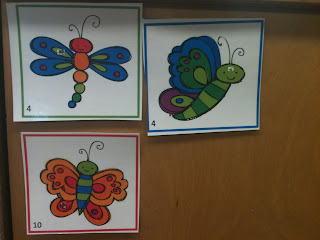Hi! I’m Sue Cahalane & I am thrilled
to be a part of this wonderful collaborative blog! A little bit about me –
I started off as a research scientist, became a science teacher & never
looked back! I’ve been teaching hands-on science to children in grades PK –
5 for almost 20 years – love love love my job!
Children are natural scientists! I believe we must nurture and develop their
innate curiosity so that they never lose their interest in science.
Did I
mention I love science?! It’s the only subject I teach, I read about it in my
spare time, I listen to science podcasts on my way to work and I blog about it
weekly at my Science for Kids blog. In order for children to truly understand
science, I believe they must have the chance to actually be scientists. I do
not demonstrate science experiments while the children watch nor do we read
about science out of a textbook. In my class,
the children are doing all science experiments and activities themselves. This
is where true learning begins!
I love children’s books & use them to
present scientific concepts whenever I can. Here is the latest one I’ve been
using to teach animal adaptations and animal classification:
Love this book! I am also an artist and I try to combine art and science whenever I can. Harnessing both sides of the brain results in greater learning!
I LOVE getting my kids outdoors exploring nature. We do several "Science Scavenger Hunts" during the school year where we search high and low for items pertaining to our current lessons.
With my little ones, I use simple lists like the one below. Click on the worksheet to download:
Here is a blank copy, you can fill in what you would like your little ones to hunt for:
I’ll be here on the 29th of
every month sharing hands-on science activities with you. I would love to hear from you! I am hoping this will be an area where we can freely exchange ideas on science education. I learn so much from my fellow educators and I am so inspired when I read teaching blogs such as this one. I look forward
to hearing about what you do in science – is
there a specific area that you need some fun hands-on activities for? Please
let me know!
Happy Spring!









































